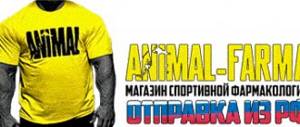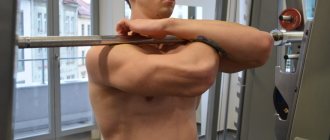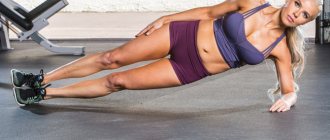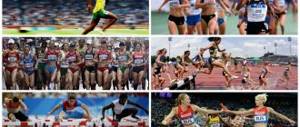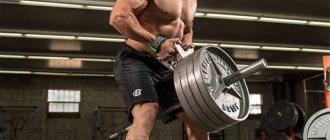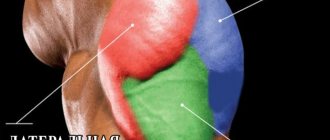Kettlebell training programs will invigorate you like nothing else. Powerful complexes from kettlebell masters Pavel Tsatsouline and Sergei Rudnev can take you to a new level and pump up your body.
You need to be very advanced in terms of pumping muscles with weights to understand the beauty of kettlebell lifting. However, you should try different options before drawing any conclusions. You know, this is a very exciting and intriguing activity!
The training program will be presented in 2 versions:
- from Pavel Tsatsouline, Master of Sports of the USSR, physical training instructor for Soviet special forces, popularizer of kettlebell training in the USA, author of books.
- from Sergei Rudnev, MSMK, five-time World champion in kettlebell lifting, president of the international academy of kettlebell lifting and fitness.
Learn from the best, they are always ready to instruct you in this sport. After all, kettlebell exercises are exercises and training programs that can not only increase your muscle mass, they will make your body more resilient and strong.
Training program from Pavel Tsatsouline
Kettlebell training is something. The number of movements with weights significantly exceeds other equipment: dumbbells, exercise machines, free weights.
Their design involves a number of interesting exercises. The kettlebell combines cardio and strength training into a powerful combination. It's a rhythmic element that does wonders for your body balance and really raises your heart rate above anything else. Plus, just 10-15 minutes with weights and you'll tear yourself apart.
Most of Pavel's videos are currently only available in English, however they give an excellent overview of the movement techniques.
This complex is performed with two weights. According to the author, the program will force you to discover your body in a new way, and build muscle mass in the process.
Additional exercises
Endurance exercises are a mandatory type of training. Most often, crosses are used for this. You should run about three times a week. Cross training can be performed both on the same days as the main program and in your free time. The ideal option would be to run five kilometers over rough terrain.
The final part of the training is a prerequisite. It most often includes exercises without load. Particular attention is paid to stretching.
Program from Pavel Tsapulin - A
Circular - 9 circles
Hanging weight lifts
- 1 set x 1 rep
- Body part: Shoulders Equipment: Kettlebells
Military two-hand kettlebell press
- 1 set of 1-2-3-4-5-4-3-2-1 reps
- Body part: Shoulders Equipment: Kettlebells
Deep squats with kettlebells
- 1 set x 1 rep
- Body part: Quadriceps Equipment: Kettlebells
Kettlebell row while lying down
- 1 set x 1 rep
- Body Part: Middle Back Equipment: Kettlebells
Russian kettlebell swings
- 5 sets of 20 reps
- Body part: Hamstrings Equipment: Kettlebells
Add to Calendar * Add to My Workouts * Print Workout
* — The service is in beta testing
In the pyramid press, we go as high as possible to find the number of repetitions beyond which you simply cannot press.
On Wednesday we return to our training, but this time we perform squats using a “pyramid”:
Jerk training
So, let's continue to get acquainted with kettlebell lifting. I really hope that you not only read such articles, but also try to perform the proposed complexes. If you already know which way to approach the kettlebells, I suggest you get acquainted with the exercises of classical biathlon. Double-event competitions in kettlebell lifting begin with a push of two kettlebells. Therefore, in this article I want to talk a little about the technique of performing this exercise and give some tips for planning training.
Initial position
As you already know, kettlebell lifting requires good strength endurance. According to the rules, 10 minutes are allotted to complete the exercise.
I am sure that most of you simply will not be able to defend this time with weights on your chest, not to mention any pushes. Therefore, if you want your results in the clean and jerk to increase, you need to learn how to stand correctly in the starting position. To do this, you need to lift the weights to your chest, your feet should be shoulder-width apart and your knees straight. The pelvis moves forward as much as possible. The elbows rest on its upper part. If you have a weightlifting belt, then when loose it can serve as a good elbow brace.
Now, how to hold weights correctly. To relieve stress on the bracelet tendon, the hand is inserted into the corner of the kettlebell arm so that the arm itself passes through the center of the base of the palm. At first, this position of the weights will cause painful sensations, you need to come to terms with this and be patient, over time the pain will disappear. Beginning guitarists also have sore fingers.
So, you have accepted the starting position. Now try to relax as much as possible, move your arms with weights forward a little so that they do not put pressure on your chest, tilt your head towards your hands, this makes it easier to maintain balance. Let me remind you once again that the starting position is practically the only phase of the exercise where the athlete can rest. Therefore, when performing all training exercises, learn to stand in this stance and try to relax as much as possible, taking 4 - 6 breaths before performing the next movement.
Push
Let's move directly to the push. It consists of three phases: acceleration, ejection and fixation.
Acceleration is performed with the legs, a sharp squat and a sharp straightening of the legs are done, while the arms continue to be in a relaxed state (pay attention to the elbows, they should be pressed to the body).
After straightening the legs, the next phase begins - pushing out. When pushing out, the arms are involved in the work, they continue the upward movement of the weights started by the legs, and the legs at this time return to the squat position.
The last phase of the push is fixation. To do this, the arms stop raised up in a stationary position, the legs are straightened at the knees. After the judge counts, the weights are lowered onto the chest; for this, the arms are relaxed, and the fall of the weights is absorbed by a slight squat and a full exhalation.
Jerk training
We looked at the technique of pushing two weights. Now some tips for planning training for this exercise. After general physical warm-up, warm-up with weights is carried out. To do this, I do the following exercises (don’t forget the advice to stand longer in the starting position):
- Broach - the weight is taken with both hands by the handle and, after swinging back between the legs, with a continuous movement it is lifted above the head with straight arms (10 - 15 lifts).
- Push one weight 5-8 times with each hand.
- Lifting two weights on the chest (3 sets of 10 times). When performing the exercise, keep your back straight and bend as little as possible when swinging the weights back between your legs.
After warming up, proceed to the main part. Below is one possible training option:
- Half push of two weights (performing the first phase of the push - acceleration) - 3 sets of 5-10 times.
- Double kettlebell push 5 sets (10% of maximum result, 20%, 30%, 25%, 15%).
- Walking with weights raised up (start with 20 seconds, adding 5 seconds each workout).
- Push one heavier weight - 3 sets of 5 times with each hand. The half push (see above) is also performed with heavier kettlebells.
After this, if you have a barbell, it is appropriate to do exercises to develop leg strength (jumping, squats), arm strength (seated, lying, standing press, barbell push) and back muscles (deadlift, bending).
There are a lot of articles and books written on how to develop strength with a barbell, so I won’t dwell on this part of the training. Plan it at your own discretion, special attention should be paid to those muscle groups that are “lagging behind”. If acceleration is poor, it means it’s the legs; if pushing out doesn’t work, then you need to “tighten up” your arms; if you don’t get to the chest, your back “lags behind.”
It is best to finish the workout by walking through gymnastic equipment. These are four exercises:
- Push-ups on parallel bars.
- Lifting legs while hanging on a Swedish wall.
- Push-ups from the floor on your fingers.
- Pull-up on the bar.
All exercises are performed 5 to 10 times without rest between them; over time, increase the number of repetitions to 15 times and perform them after each workout. By performing a walk, you will relieve tension from the spine, allowing you to work the muscles that were little used during training.
Happy training!
Don't know where to start? The result is not growing? Do you need to get ready for an important start? Need a kettlebell lifting trainer? Here you go: [email protected] – KOSYANENKO SERGEY IVANOVYCH
0
Author of the publication
offline for 3 days
Sergey Kosyanenko
34
MSMC in kettlebell lifting.
Christian. An artist by profession. He worked as a teacher and coach, served in the Russian Armed Forces for 14 years. Comments: 541Publications: 2042Registration: 06-05-2018
Program from Pavel Tsapulin - B
Circular - 11 circles
Hanging weight lifts
- 1 set x 1 rep
- Body part: Shoulders Equipment: Kettlebells
Military two-hand kettlebell press
- 1 set x 1 rep
- Body part: Shoulders Equipment: Kettlebells
Deep squats with kettlebells
- 1 set of 1-2-3-4-5-6-5-4-3-2-1 reps
- Body part: Quadriceps Equipment: Kettlebells
Kettlebell row while lying down
- 1 set x 1 rep
- Body Part: Middle Back Equipment: Kettlebells
One-arm kettlebell snatch
- 5 minutes 1 set
- Body part: Shoulders Equipment: Kettlebells
Add to Calendar * Add to My Workouts * Print Workout
* — The service is in beta testing
Do as many maximum repetitions of pyramid squats as you can handle. And aim to do a 5 minute dash. You can change your hand, for example, every 10 times.
It is recommended to take the weight for the snatch less than the working one. Exactly the kind that will allow you to make jerks for a long time. If at first you don’t succeed in five minutes, don’t give up.
Training schedule
Train on Mondays, Wednesdays and Fridays, changing the order of the bench press and squat pyramid:
| Week 1, 3 | Week 2, 4 |
| Monday – A/press (X) Wednesday – B/squats (Y) Friday – A/press (X) | Monday – B/squats (Y) Wednesday – A/press (X) Friday – B/squats (Y) |
You will perform the same number of MAXIMUM reps (X and Y) to “fix” the pyramids for 4 weeks. In the example workouts, these are 5 presses and 6 squats.
Bodymaster.ru recommends Fitness Trainers:
In the fifth week we increase the MAXIMUM by +1 (total 6 and 7)
In the sixth week we increase the MAXIMUM by +2 from the base (total 7 and 8).
| Week 5 | Week 6 |
| Monday – A/press (X+1) Wednesday – B / squats (Y+1) Friday – A/press (X+1) | Monday – B / squats (Y+2) Wednesday – A/press (X+2) Friday – B / squats (Y+2) |
That's all. In six weeks, you will see your own gains in meat, and you will also feel your body in a new way. Unload yourself with a week of fun and easy training and you are ready for strength training that uses the “pyramid” (1, 2, 3, 2, 1).
These six-week workouts can be scheduled several times a year. Remember that you need to eat a good and balanced diet in order to gain quality mass.
Rest
You can rest between approaches as much as you see fit. A good guideline is restoring breathing. Rest one day between workouts.
Biathlon - Clean and Jerk
Two-handed kettlebell push
- Rate by minute: 9, 10, 10, 3
- Body part: Shoulders Equipment: Kettlebells
Two-handed kettlebell push
- Tempo by minute: 11, 11, 11, 11, 12, 12, 6
- Body part: Shoulders Equipment: Kettlebells
Treadmill workout
- 4 km in the third zone
- Body part: Quadriceps Equipment: Exercise
Add to Calendar * Add to My Workouts * Print Workout
* — The service is in beta testing
Stretching - 15-20 minutes after the complex.
Combined - Snatch
Circular - 10 laps
One-arm kettlebell snatch
- 1 set of 10 reps
- Body part: Shoulders Equipment: Kettlebells
Attention: on each hand, rest 30 seconds
Swing kettlebells with two hands
- 1 set of 20 reps
- Body part: Hamstrings Equipment: Kettlebells
Treadmill workout
- 6 km in the second zone
- Body part: Quadriceps Equipment: Exercise
Add to Calendar * Add to My Workouts * Print Workout
* — The service is in beta testing
Some mistakes made by beginner weightlifters when performing the kettlebell snatch exercise and ways to eliminate them are discussed in the video below from Sergei Rudnev.
Kettlebell training, weekly plan
Hello friends, we continue the topic of kettlebell lifting. Next, I will tell you about the training plan for the week. This article will be useful for beginner weightlifters. In it we will talk about the special physical training of weightlifters during the preparatory period.
- How to develop the endurance of a weightlifter?
Since kettlebell lifting is aimed at developing endurance and this is the main criterion for assessing the readiness of a kettlebell lifter, the greatest attention in the preparatory period is paid to special endurance.
You can achieve good results by increasing the volume of training at low to medium intensity. Volume is taken as the number of approaches and repetitions of performing an exercise in them; intensity implies the speed of work and the duration of rest between different approaches.
Variant of training plans during this period
- Monday
Warm up - 15 minutes. It includes running, general physical exercise (general physical exercise) and warm-up with weights.
Main part:
1. Classic clean and jerk, 8-10 sets of 10-12 lifts (4 minutes of walking around the gym instead of resting);
2. Classic light kettlebell snatch, 2 sets of 80 - 90% of the maximum with each hand.
Final part:
1. Deadlift, 3 sets of 50% of what you can lift 12 - 16 times.
2. Walking through gymnastic apparatus, 1 approach to 3–5 apparatus according to how you feel.
- Tuesday
Cross-country or jogging, you can also train on a treadmill, but with variations in the speed and incline of the track - 30 minutes.
- Wednesday
Warm up - 15 minutes.
Main part:
1. Snatch of one competitive kettlebell 10 sets of 10 - 15 times with each hand (rest 4 minutes);
2. Snatch of a lighter weight 1 set to the maximum;
3. Classic push-and-pull 3 sets of 12 - 16 times (4 minutes of walking around the gym instead of resting).
Final part:
1. Sitting on a bench, press kettlebells or barbells for 3 sets, 12–14 times, weight 30–50% of the maximum;
2. Walking through gymnastic apparatus, 1 approach to 3–5 apparatus according to how you feel.
- Thursday
Swimming or football - 60 minutes.
- Friday
Warm up 15 minutes.
Main part:
1. Classic clean and jerk, 10 sets of 12 - 16 reps (3.5 minutes of walking around the gym between sets);
2. Light kettlebell snatch, 2 sets of 80 – 90% of the maximum with each hand.
Final part:
1. Jumping with a barbell on the shoulders, 3 sets of 30 jumps with a weight of 50% of the maximum;
- Saturday
Cross – half an hour.
- Sunday
Rest.
- What should you consider during training?
Weekly we reduce the rest between each approach by 10 - 20 seconds, and increase the barbell as the loads are absorbed. At the end of the month we do an assessment (performing competitive exercises to the maximum). The results shown may be pleasantly surprising if you conscientiously followed the intended training plan for a month and followed all the above tips.
If something doesn’t work out, it’s important not to despair and not give up. It may be necessary to increase the number of kettlebell lifts in each approach; if possible, increase the weight of the kettlebells by 2 kg. Kettlebells are currently available from 4 kg to 32 kg, with a 2 kg step between kettlebells.
There is no need to rush to increase the intensity of the push and jerk. On the contrary, at first we try to stand with weights for as long as possible. We remember that it usually takes no more than 10 minutes to perform basic kettlebell exercises! We are trying to survive this time based on the first estimates. Therefore, we take the pace of performing the clean and jerk in such a way as to withstand as long as possible out of the allotted 10 minutes.
It is also important to remember that if you just increase the load, sooner or later severe fatigue will occur! This in turn can lead to serious injury and a reluctance to lift weights anymore. Therefore, always include rest days and fasting weeks in the training process, when the loads are significantly reduced or the type of activity changes. For example, do more gaming, running or gymnastics training.
If we follow a progressive and well-thought-out training schedule, we are more likely to succeed.
So, we started training and are ready to overcome all obstacles along the way. Remember that this attitude is very important for future victories. Don't be upset if you have to wait longer than expected! Success will come if you don't give up! Good luck and share and brag about the results.
Additional exercises in the program
Let's look at a few additional exercises for beginners. Kettlebell exercises are definitely not for weaklings. Their essence is precisely to make you stronger and more resilient.
Swing with one hand
It's a little like jumping rope, but with weights. Start with a light weight of 12-16 kg. Take it with both hands and swing it between your legs, then lift it to eye level and lower it back down. This movement is one of the great muscle-building moves you can do in the gym.
It is not intended for the upper body. If you do it right, it means your hips, the backs of your legs and your core are working. You can swing the swing with one hand (one at a time).
Bent-over row
Performing kettlebell deadlifts is a great way to replace a barbell while using less weight. Take a 16 kg weight and place it between your legs. Without arching your lower back, with your legs bent and your chest open, grab the kettlebell and straighten up, squeezing your buttocks and abs.
Once you improve your strength, try to keep your legs straight but not tense. Alternatively, you can do alternate kettlebell rows.
Alternating bent-over kettlebell row
Shoulder press
Doing kettlebell presses will strengthen your upper body and protect your shoulders. Hold a 16 kg weight with one hand, resting on the biceps of a bent elbow, pressed close to the body. Lift it up above your head and, controlling the weight, lower it. Repeat.
Make sure you hold the kettlebell firmly so it won't slip or fall. Such actions will make your shoulder more dynamic than when exercising with dumbbells. Balance will develop agility and increase strength. For seated variations that will further develop body balance, you will need a special ball and this set.
Lunges with weight transfer
Adding weights to lunges is a great way to work your legs and core. Take 16 or 32 kg weights in both hands or try to throw the same one between them. Lunge back with your left leg. Now throw the weight below and catch it with your right hand. Step back.
Lunges with weights under the foot
Repeat the movement for 2 minutes, smoothly and quickly throwing the weights back and forth.
Chest Press
This is the most difficult movement for a person, which Laird Hamilton teaches you to do with kettlebells. Here's how to do it: Grab two matching weights. Lie on your back on a bench or on a balance ball (this will make the exercise more difficult), as if you were going to do a bench press.
Now turn the weights in your hands so that the weight is facing the ceiling, and control their balance as you push them up and down. Watch the traffic. You'll be surprised how difficult it is to keep track of each weight individually.
Preparatory and warm-up exercises with kettlebell[edit | edit code]
Source: “Kettlebell lifting. Training with kettlebells"
.
Management. Author:
instructor Pavel Tsatsoulin, 2015
Lift the weight to determine what condition you are in now. Stand comfortably. Legs slightly wider than shoulder-width apart, feet turned slightly outward, with your shiny new weight between them. Squat down as if sitting on a chair, grab the weight with both hands, spread your legs to the sides. Have someone run you through the checklist (see below). And don't use a mirror!
Sumo deadlift[edit | edit code]
Main article:
Kettlebell deadlift
Checklist for Kettlebell Sumo Deadlifts
- Arms are straightened, legs take the weight.
- Knees and feet point to the same side.
- The heels are pressed to the floor.
- back straight. "Straight" does not mean "vertical". “Straight” means “not bent.”
- the gaze is directed forward, not up or down.
If you fail to meet any of the above requirements, you will need to do prep exercises daily until you pass the test.
Wall Face Squats[edit | edit code]
Main article:
Kettlebell squats
This exercise is taken from John Du Kane's book, The Qigong Recharge. Chinese wall squats are an excellent exercise for developing the back and hip joints, which are absolutely necessary for deadlifts and squats.
Stand facing the wall a few centimeters away from it, feet slightly wider than shoulder-width apart, and keep your arms free. Press your feet firmly into the floor, the outer sides of your feet should not lift, do not frog your knees outward, squat down as far as you can.
You will notice that you cannot go below a certain point without expanding your chest and arching your lower back. If you try to prove otherwise and continue to sink down, your forehead and knees will hit the wall and you will have to move away from it.
Move slowly and carefully, use force. When your legs or back get tired, stop, shake to relieve tension and do the exercise over and over again. You will get more benefit from the exercise if you do it several times throughout the day, every day.
Continue practicing the movement until you reach a half squat. Once you've mastered it, move a little closer to the wall and continue practicing. The goal is that with your toes touching the wall, you can squat low enough to grasp the kettlebell.
Halo[edit | edit code]
Main article:
Kettlebell halo
Halo
is an excellent exercise for improving the mobility of your shoulders, proposed by Russian kettlebell lifting master Steve Maxwell. Hold the kettlebell upside down by the handles and slowly rotate it around your head. Gradually reduce the range of motion. To protect your back, squeeze your buttocks tightly.
Stretching with a pump (swing)[edit | edit code]
The starting position is like push-ups, with your buttocks raised high. Hands shoulder-width apart, legs slightly wider, pelvis raised up. Don't let your feet turn inward. Without bending your elbows, shift your body weight forward and lower your pelvis down. Bend over while keeping your arms straight. Stretch your spine and look up. Squeeze your glutes and push your pelvis forward as far as you can. Now turn your pelvis a little, first in one direction, then in the other. Try to relax the muscles in your upper thigh. "Let's download."
The following movement will help improve the neck mobility needed to lift kettlebells. Keeping your arms straight, return to the starting position. Push your pelvis back as far as it will go and try to press your chest toward your thighs. Make sure your feet are pointing forward. Make several short springy movements, trying to lower your chest even lower. Your partner can help by applying gentle pressure on your back between your shoulder blades. The arms must be fully straightened at the elbows, otherwise you can injure your shoulders. Repeat the exercise several times. Focus on increasing the range of motion in your back, legs and shoulders, not on speed or increasing the number of repetitions.
